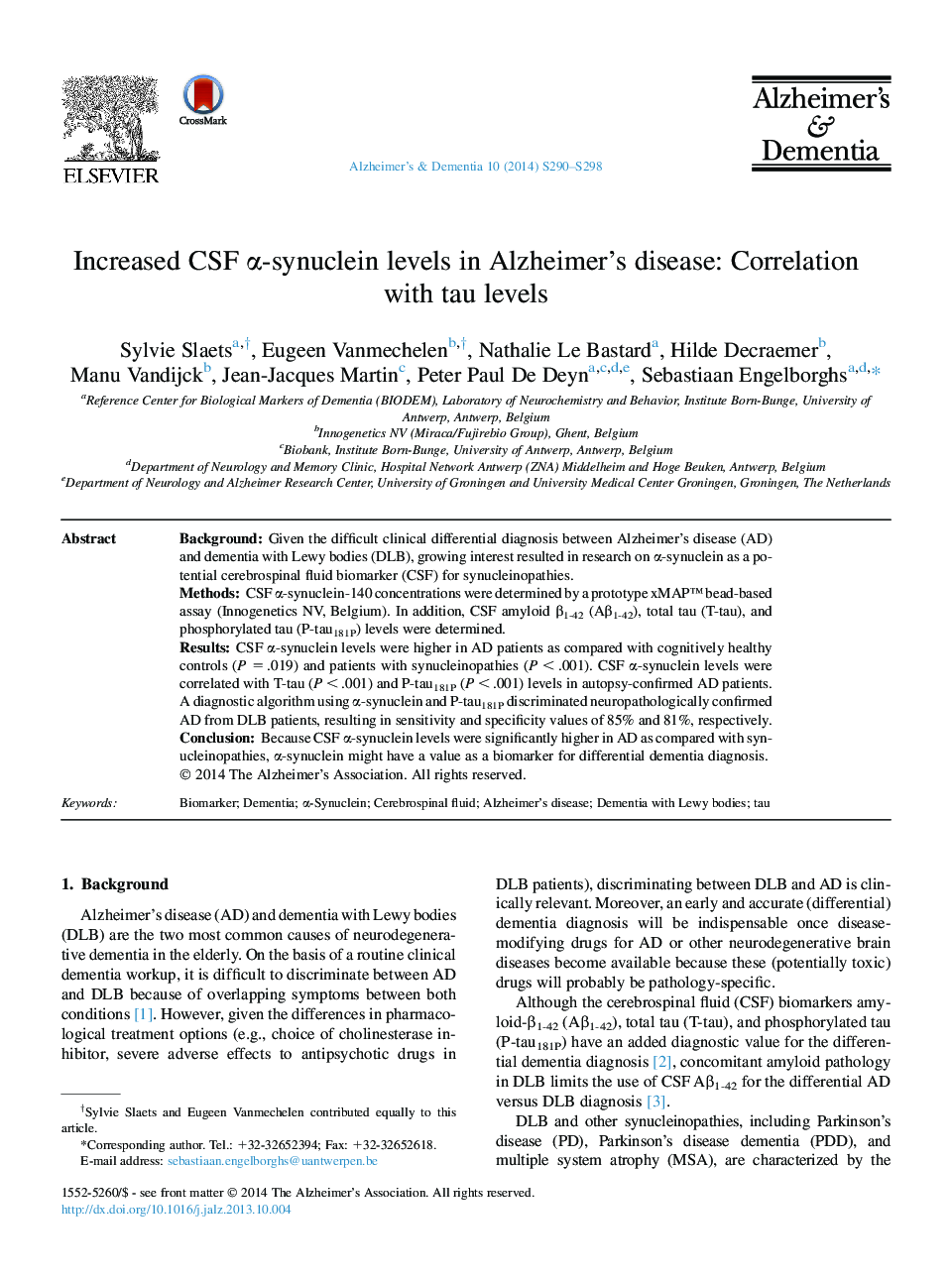| Article ID | Journal | Published Year | Pages | File Type |
|---|---|---|---|---|
| 5622831 | Alzheimer's & Dementia | 2014 | 9 Pages |
BackgroundGiven the difficult clinical differential diagnosis between Alzheimer's disease (AD) and dementia with Lewy bodies (DLB), growing interest resulted in research on α-synuclein as a potential cerebrospinal fluid biomarker (CSF) for synucleinopathies.MethodsCSF α-synuclein-140 concentrations were determined by a prototype xMAP⢠bead-based assay (Innogenetics NV, Belgium). In addition, CSF amyloid β1-42 (Aβ1-42), total tau (T-tau), and phosphorylated tau (P-tau181P) levels were determined.ResultsCSF α-synuclein levels were higher in AD patients as compared with cognitively healthy controls (P = .019) and patients with synucleinopathies (P < .001). CSF α-synuclein levels were correlated with T-tau (P < .001) and P-tau181P (P < .001) levels in autopsy-confirmed AD patients. A diagnostic algorithm using α-synuclein and P-tau181P discriminated neuropathologically confirmed AD from DLB patients, resulting in sensitivity and specificity values of 85% and 81%, respectively.ConclusionBecause CSF α-synuclein levels were significantly higher in AD as compared with synucleinopathies, α-synuclein might have a value as a biomarker for differential dementia diagnosis.
